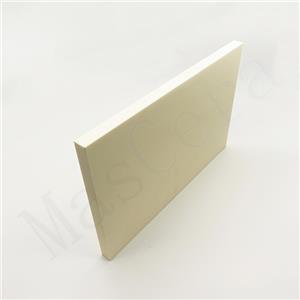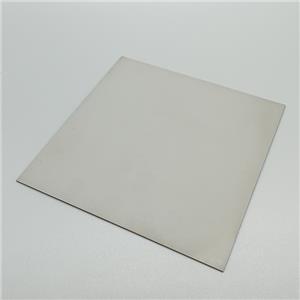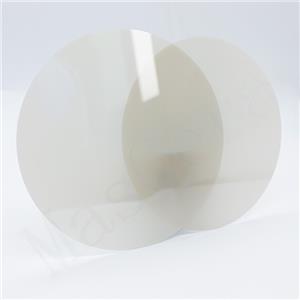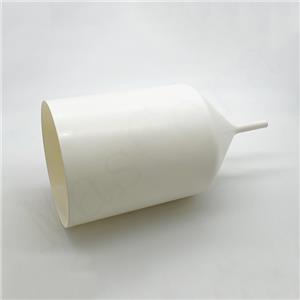Metallization Processes for Different Ceramic Materials
Metal materials have good plasticity, ductility, conductivity, and thermal conductivity, while ceramic materials have high temperature resistance, wear resistance, corrosion resistance, high hardness, and high insulation, and they each have their own wide range of applications. Ceramic metallization, invented by American chemists Charles W. Wood and Albert D. Wilson in the early 20th century, combines the two materials to achieve complementary performance. They began researching methods for applying metal coatings to ceramic surfaces in 1903 and obtained a patent for the technology in 1905. This technology was subsequently widely used in industrial production to manufacture ceramic products with metallic appearance and properties, such as heat-resistant ceramics and electronic devices.
Ceramic metallization refers to firmly adhering a thin layer of metal film to the ceramic surface to achieve welding between ceramic and metal. There are various ceramic metallization processes, including molybdenum-manganese method, gold plating method, copper plating method, tin plating method, nickel plating method, and LAP method (laser-assisted plating). Common metallized ceramics include beryllium oxide ceramics, alumina ceramics, aluminum nitride ceramics, and silicon nitride ceramics. Since the surface structure of different ceramic materials is different, different metallization processes are suitable for metallizing different ceramic materials.
1.BeO Ceramic
The most commonly used metalization method for BeO ceramics is the molybdenum-manganese method. This method involves coating a ceramic surface with a paste mixture of pure metal powders (Mo, Mn) and a metal oxide, then heating it at high temperature in a furnace to form a metal layer. Adding 10% to 25% Mn to Mo powder is to improve the bonding between the metal coating and the ceramic.
The main metalization method for Al2O3 ceramics is the Direct Bonded Copper method (DBC), which allows direct connection between copper foil and Al2O3 ceramic without the need for additional materials. The process involves covering the surface of the Al2O3 ceramic with treated copper foil, introducing an inert gas with a certain oxygen content, and then heating it. During this process, the copper surface is oxidized, and when the temperature reaches the eutectic liquid phase range, the Al2O3 ceramic and copper produce a eutectic liquid phase that wets both materials and completes the initial connection. During cooling, the eutectic liquid phase precipitates Cu and Cu2O, which exist at the interface to achieve a tight connection.
Currently, the main methods used for AlN ceramics are DBC and Active Metal Brazing (AMB).
The direct copper plating method for AlN ceramics is similar to that for Al2O3 ceramics but with some differences. This is because AlN is a non-oxide ceramic, and the eutectic liquid phase spreads poorly on its surface, making direct bonding impossible. Therefore, it needs to be pre-oxidized at around 1200 ℃, and an oxide layer of about 1-2 μm will be generated on the surface of the AlN ceramic after oxidation. The pre-oxidized AlN ceramic and copper are then connected in the temperature range where the eutectic liquid phase exists to complete the preparation of the AlN coated copper board.
Another commonly used method is AMB, which connects the AlN ceramic and copper foil with active metal brazing filler materials, with Ag-Cu-Ti system being the most commonly used. Ti in the brazing filler material is an active metal, accounting for about 1-5% of the mass proportion, while Cu accounts for about 28% and Ag accounts for about 67-71%. The problem with connecting AlN ceramic and copper foil through active metal brazing is that a lot of internal stress is left in the formed structure, which can lead to reliability issues in practical applications. Therefore, in the design process of the brazing filler material composition, in addition to Ag, Cu, and Ti metal particles, some fillers that can reduce thermal mismatch need to be added. Currently, the commonly used fillers mainly include SiC, Mo, TiN, Si3N4, and Al2O3.
Si3N4 ceramics are generally connected to copper using Active Metal Brazing (AMB). The reason why direct copper coating cannot be used for surface metallization of Si3N4 ceramics is that an oxide layer cannot be directly generated on the surface of Si3N4 ceramics. Similar to AlN, Si3N4 is also a nitride, which can react chemically with some active metals (Ti, Cr, V) to generate continuous nitrides in the interface layer, thus realizing the connection between Si3N4 ceramics and metal brazing materials. The most commonly used metal brazing material is the Ag-Cu-Ti system, but the liquid phase line of these brazing materials is below 1200 K, and their oxidation resistance is poor. The temperature of use after brazing should not be higher than 755 K.
XIAMEN MASCERA TECHNOLOGY CO., LTD. is a reputable and reliable supplier specializing in manufacturing and sales of technical ceramic parts. We provide custom production and high precision machining for a wide series of high performance ceramic materials including alumina ceramic, zirconia ceramic, silicon nitride, silicon carbide, boron nitride, aluminum nitride and machinable glass ceramic. Currently, our ceramic parts can be found in many industries like mechanical, chemical, medical, semiconductor, vehicle, electronic, metallurgy etc. Our mission is to provide the best quality ceramic parts for global users and it is a big pleasure to see our ceramic parts work efficiently in customers' specific applications. We can cooperate on both prototype and mass production, welcome to contact us if you have demands.




